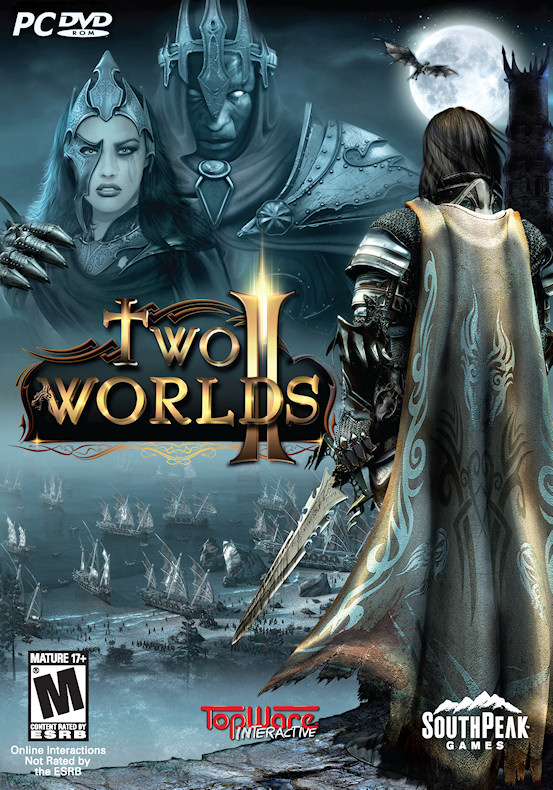E3 2010: Two Worlds II Preview
-
Category: PreviewsHits: 13619

Article Index
Page 1 of 2
To say that Reality Pump's Two Worlds sequel looks better, plays better, and runs better than the original would be a serious understatement. However, when you consider the state in which the first Two Worlds shipped (despite having some solid RPG mechanics underneath its horrendous framerate and painful animations), I suppose it really doesn't take much. That's not to say I don't have a few reservations about the sequel - I do - but it's promising to see that the teams involved are making every effort to bring Two Worlds II to a loftier position in your game library than the first one will ever reach. Originally planned as an expansion pack called The Temptation, the folks at SouthPeak Games, TopWare Interactive, Zuxxez, and Reality Pump collectively decided to take a more ambitious route and turn the addon into a full sequel. To deal with the "technical shortcomings" in the original Two Worlds, the team went to work on a new engine called GRACE. Because the engine needed separate platform optimizations, though, it's technically divided into three separate iterations - GRACE 1 powers the PC version of Two Worlds II, GRACE 2 powers the Xbox 360 version, and GRACE 3 powers the PlayStation 3 version. Each iteration of the GRACE engine has its own team working on it, though the primary architecture (with all of the physics, lighting, and graphical finesse expected from a modern-day engine) is the same across all three.
In case you didn't already know, Two Worlds II employs a classless character progression system. As your character gains experience and levels up, they'll receive skill points that can be assigned to various skill trees (warrior, assassin, ranger, mage, crushing, etc.) comprised of as many as 12 skills each. For example, proceeding down the warrior skill tree will unlock skills such as "Block", "Power Swing", "Counter Strike", and "Mental Blast". Advancing in the assassin skill tree, on the other hand, will grant you the "Sneak", "Stealing", "Set Trap", and "Death Strike" skills. You're free to spend your skill points however you wish, so creating a hybrid character that dabbles in multiple skill professions is easy enough. On top of that, you can respec your character at any time without penalty. Whether this leads to brilliant convenience or sheer silliness ("I think I'll be a warrior for this battle, and a mage for the next.") has yet to be seen.
The item upgrade system has also been expanded from the first game, as it now allows you to break down excess items into specific components. For example, a sword might be broken down into a small amount of steel and wood, which can then be used to upgrade the damage of your preferred weapon (if you have the appropriate crafting skill). These mechanics are especially useful if you're happy with the way your equipment looks, as you'll still be able to upgrade the statistics and effects of your equipped items by implementing other items' components.
After I had 15 minutes worth of hands-on time under my belt, TopWare Interactive managing director James Seaman stopped by my station to address any questions I had. Considering that his history includes working as a marketing manager at SSI in the late 90's, we had quite a bit to discuss. On the topic of Two Worlds II, though, James started off by telling me just how much work has gone into making sure the sequel surpasses the original title in every way. Gone is the Old English narrative and dialogue that permeated the first game - this time, the storyline is being scribed by a handful of talented writers that include Devon Smith of Dead Space fame. There's also a major emphasis being put on character animations and diversity - the team even brought in professional fencers to choreograph the game's fighting moves and recorded the facial expressions and movements of 1000 people in a theater to ensure that the game's NPCs had a sufficient amount of variety.


